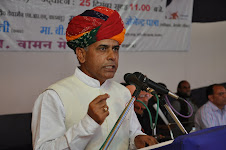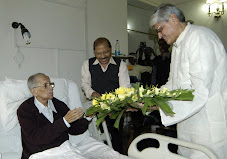Economic and Political Weekly April 23, 2005 1757
Dwelling on Morichjhanpi
When Tigers Became 'Citizens',
Refugees 'Tiger-Food'
In 1978, several hundred Bengali refugees in Morichjhanpi, one of the
northern-most forested islands of the Sundarbans, were brutally evicted by the
authorities for violating the Forest Acts. This paper looks at how the memory of
Morichjhanpi was evoked by the islanders to reveal their resentment about the unequal
distribution of resources between them and the Royal Bengal tigers of the
Sundarbans reserve forest. The government's primacy on ecology and its use of force
in Morichjhanpi was seen by the Sundarbans islanders as a betrayal not only of
refugees and of the poor and marginalised in general, but also of Bengali backward
caste identity. At the same time, the reasons leading to the Morichjhanpi massacre have
to be understood in relation to the long history which led to the partition of Bengal
and the intricacies of caste, class and communal differences.
ANNU JALAIS
As developed by Ross Mallick,4
the reasons leading to the
Morichjhanpi massacre have to be understood in relation to the
long history which led to the partition of Bengal and the intricacies
of caste, class and communal differences. Briefly, in the colonial
period, the East Bengal namasudra movement had been one of
the most powerful and politically mobilised dalit movements in
India.5
In alliance with the Muslims, they had kept the Bengal
Congress Party in opposition from the 1920s. The exclusion of
the bhadralok from power led to the Hindu elite and eventually
the Congress, pressing for the partition of Bengal at independence,
so that at least the western half would return to their control.6
Partition, however, meant that dalits lost their bargaining power
when divided along religious lines of Hindus and Muslims and
became politically marginalised minorities in both countries.7
With the partition of India, threatened by their Muslim and
lower-caste tenants, the upper-caste landed elite formed the first
wave of migrants from East Pakistan into West Bengal. Subsequent migrants were rural middle class cultivators and artisans.
If the richest amongst them found a niche amongst relatives and
friends in Kolkata and its outskirts, the poorer amongst them
squatted on public and private land and tried to resist eviction.
In the 1960s and 1970s (especially after the Bangladesh war of
independence in 1971, Mujibur Rahman's assassination in 1975
and Zia-ur-Rahman's coming to power) communal agitations
started to hereafter be directed against the poorest and low caste
Hindus who had remained in East Bengal. They now sought
refuge in West Bengal.
Unlike their richer counterparts, who were backed by family
and caste connections, many of these poorer migrants did not find
a way of living in Kolkata and were sent to various inhospitable
I
Refugees and Bengali Identity
A
ll through the 1950s, 1960s and 1970s Bengali Hindus
from what had become East Pakistan and subsequently
Bangladesh entered West Bengal in the hope of settling
down. They were however sent to various inhospitable areas
outside West Bengal with the assurance that they would eventually
be relocated in West Bengal. Soon after the Left Front came to
power, in 1978 they found their refugee supporters return; amongst
them, about 30,000 managed to sail to Morichjhanpi – one of
the northern-most forested islands of the Sundarbans – from
where they were brutally evicted for violating the Forest Acts.
Based on nearly two years' fieldwork in the Sundarbans, this
paper looks at how the memory of Morichjhanpi was evoked
by the islanders to talk about their resentment about the unequal
distribution of resources between them and the Royal Bengal
tigers of the Sundarbans reserve forest. This paper looks at how
the government's primacy on ecology and its use of force in
Morichjhanpi that saw hundreds of refugees dying, was seen by
the Sundarbans islanders as a betrayal not only of refugees and
of the poor and marginalised in general, but also, of the Bengali
'nimnobarno' identity.1
In fact, the Morichjhanpi massacre was
considered a double betrayal by the Sundarbans islanders. They
argued that it was because they were considered as lesser mortals
situated at the periphery and marginalised due to their social
inferiority by the 'bhadralok'2
– by which is meant the anglicised,
well-connected, educated, moneyed, essentially Hindu upper
caste, and mainly urban, Bengalis – that tigers, taking the cue,
had started feeding on them.3





































No comments:
Post a Comment